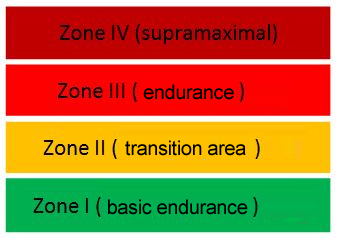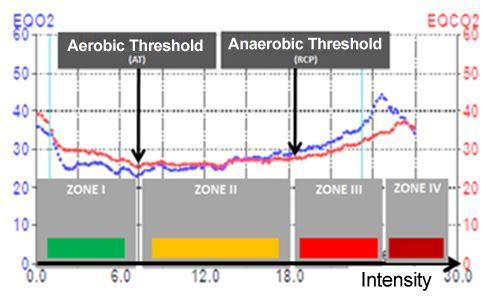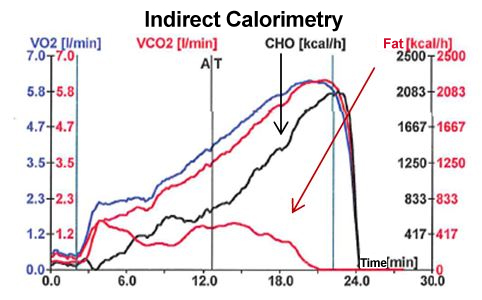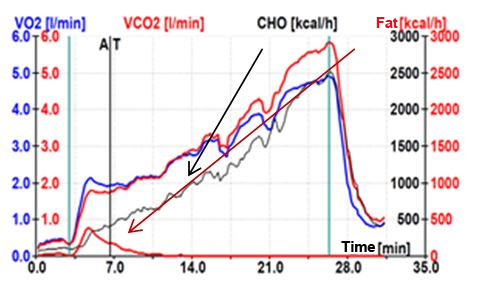The Conconi Test is a sports medicine test intended to measure an individual’s maximum anaerobic and aerobic threshold heart rates. The test measures a person’s heart rates at different loads (e.g. faster speeds on a treadmill). The points are plotted on a graph with heart rate on one axis and load on the other axis; the graph’s deflection point indicates the aerobic threshold. The heart rate increases (approximately) linearly up to the deflection point, where the heart rate reaches AT (also known as LT, lactate threshold, in more modern nomenclature). The test continues for a while, under increasing load, until the subject has gone well past the anaerobic threshold.
In addition to the Conconi test, an ambitious endurance athlete can use a cardiopulmonary exercise test called a Spiroergometric test. It’s a physiological test that does an analysis of your oxygen inhalations and your carbon dioxide exhalations to give you your aerobic and anaerobic threshold. In addition, it will tell you how well trained your fat metabolism is.

When we talk about endurance training, there are four different physiological training zones (Zone I-IV). These zones are named differently depending on the sport. Training in Zone I predominantly uses an aerobic energy supply. Aerobic is defined as ‘with the aid of oxygen’. The mitochondria, or power plants of the muscles, are used during aerobic exercise. The metabolism of fat accounts for more than 50% of the energy supply for Zone I. Consequently, muscle glucose storage ( glycogen ), is preserved. There will also be no measurable increase in blood lactate concentration.
In the transition zone ( Zone II ), the energy supply is both aerobic and anaerobic. The increase in blood lactic acid concentration can be measured, but lactate production and the body’s ability to flush out the lactic acid stays in a state of equilibrium. The carbohydrate metabolism plays an increasingly important role in the energy supply.
Zone III corresponds to the anaerobic training area. Carbohydrate metabolism is predominant. This leads to a continuous increase in blood lactate levels and an imbalance in the production and reduction of lactic acid. The body can no longer keep up with this acidification of the muscles, and sooner or later (depending upon the individual’s fitness level), the intensity must be reduced.
Zone IV corresponds to a sub-area of Zone III. This zone is only for short interval loads and is all anaerobic. The duration an individual can stay in Zone IV is a few seconds to a couple of minutes in a highly trained athlete.

An analysis of the training of various endurance sport athletes (eg marathon runners, cyclists or skiers), show that over 66% of the training volume takes place in basic endurance zone of Zone 1. Zone II is only for very specific training and not a zone to spend much time in. Zone III should comprise about 15-20% of the training. Training in these zones helps to optimize fat metabolism and trains the body to preserve the glycogen reserves. Sprinkling in higher intensity Zone III workouts helps to maximize oxygen uptake and improve overall running economy.
Fat metabolism efficiency can be measured with a spiroergometric performance test. This principle is shown in the following two graphs:


running.COACH applies this model to their training programs. This way, there is an optimization of fat metabolism, improved oxygen absorption, and a focus on greater variation and less monotony with the training.
This blog was written by Dr. Luke Trachsel, Cardiovascular Prevention, Rehabilitation and Sports Medicine, Swiss Heart and Vascular Center, Inselspital, Bern.
